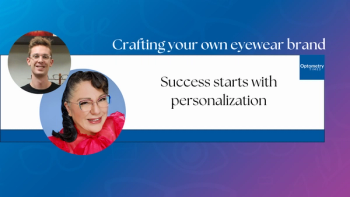
It's all about service, part 2
Have a policy in place to deal with patients who take your prescription, purchase eyeglasses online, but then come back to your practice for adjustments.
Last month, I wrote about online ordering of prescription eyewear and how optometrists need to have a policy in place when these cases present to your office.
Dr. BowlingSure enough, just last week a patient showed up at the office with a copy of his spectacle prescription in one hand and a pair of progressive lenses and frames he purchased online for about $300. He said he could not see well out of these glasses and wanted to know “what we're going to do about it.”
Because I wrote his spectacle prescription, I neutralized the glasses and compared that result to what I had found on exam. Then, I gave the patient my analysis: The prescription was off by 0.50 D in cylinder and the axis was off by 15 degrees; the PD was off by 4 mm; and the seg height was wrong.
He then wanted me to write a letter stating all these discrepancies he could send to the online manufacturer. “No,” I replied, “I checked your prescription against what I had written, and that’s as far as I'm willing to go.”
“Well, what about these glasses? I’m out $300!” the man stated indignantly.
I said: “I hate that for you, sir. I really do. For just a few dollars more you could’ve had them made correctly here and not had this hassle. I stand behind my work, and if it's wrong I'll fix it, but I won’t stand behind someone else’s. You'll have to take it up with them.” He stormed out of the office. I doubt I'll see him again.
I’m certain I’m not alone in this scenario, and it is going to become more frequent in the days ahead. How to combat this is for people with more business acumen than I, yet we all need clear policies in place outlining how you and your staff should handle the situations, as they no doubt will grace your door.
Newsletter
Want more insights like this? Subscribe to Optometry Times and get clinical pearls and practice tips delivered straight to your inbox.
















































.png)


